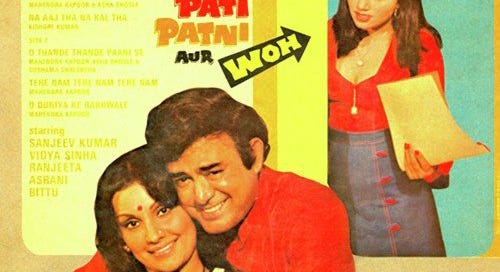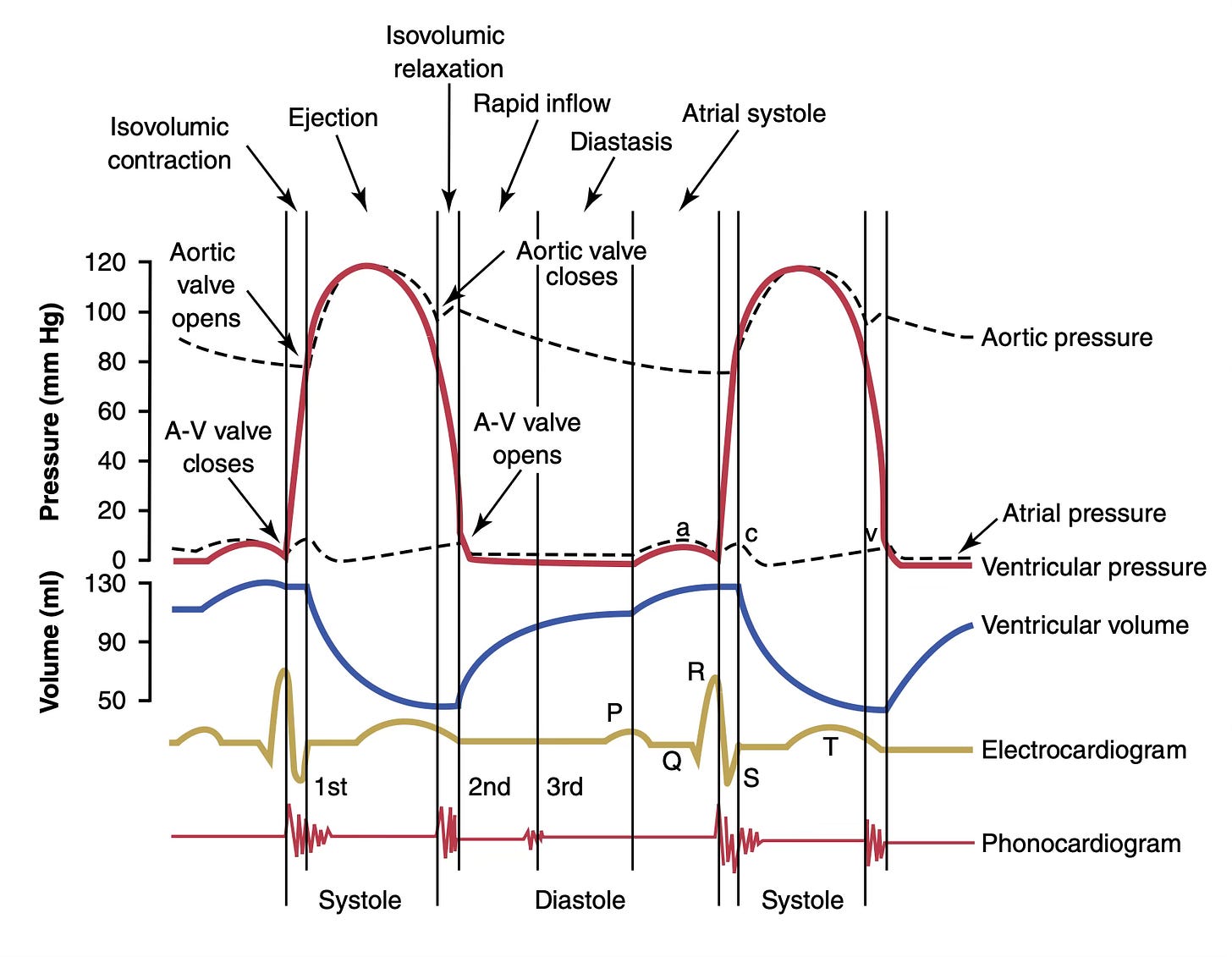In the 1979 film directed by B R Chopra, Pati Patni aur Woh, Ranjeet Chaddha (played by Sanjeev Chopra) is a married man living with his wife Sharda (Vidya Sinha). Ranjeet hires a beautiful secretary, Nirmala Deshpande (Ranjeeta Kaur) and is smitten by her. He lies to her that Sharda is ill with cancer to gain sympathy. Thus, he starts an extra-marital affair. The rest of the film is a comedy of errors and eventually ends in both the women realising they were being fooled. Sharda confronts Ranjeet, who then apologises. They are re-united. Nirmala leaves the scene gracefully.
Today, I was reading in detail about heart sounds (that we doctors hear with the help of our stethoscopes) and it led me to review how the heart pumps blood. I was particularly interested in trying to make sense of when which valve opens or closes in different parts of this process. Within one heart beat whatever happens within the heart is referred to as the cardiac cycle. For the sake of simplicity imagine there are just three parts involved in it, the left atrium (LA), the left ventricle (LV) and the aorta (Ao). LA (a chamber) pumps blood to the LV (another chamber). LV pumps blood to the Ao (a tube).
LA —> LV —> Ao
Between the LA and LV lie the mitral valve and between the LV and Ao lie the aortic valve.
LA — mitral valve — LV — aortic valve — Ao
So, when LA is pumping blood to LV, mitral valve should open up and aortic valve should remain closed, otherwise some of the blood from the LV will go to Ao when it should not. Similarly, when LV is pumping blood into the Ao, aortic valve should open up while the mitral valve should remain closed, otherwise some of the blood from the LV will go back into the LA.
In effect LV is Ranjeet who is double-timing Sharda, the LA; and Nirmala, the Ao. But in order to do so the two valves should shut and open precisely when warranted. If they don’t obey, Ranjeet will be exposed.
In first year of medical school, the subject of physiology is thrust before us. In this subject one of the most complicated but beautiful topic is the cardiac cycle. And while the unsuspecting undergraduate is reading the topic and trying to make sense of which valve opens when, she faces the inimitable graph which is the staple of all physiology textbooks. Even physiology teachers are scared of it. No teacher, except for one physiology senior resident, whom I knew during my undergraduate years, could draw it on the blackboard from scratch while explaining it at the same time.
This is that scary graph…
[A-V valve is another name for the mitral valve in the graph above]
Only focus on three curves:
Red curve - denoting pressure in the LV
Top dashed curve - denoting pressure in the Ao
The lower dashed curve - denoting pressure in the LA
Forget about all other curves and waves. Pay attention to the phases systole and diastole.Systole is the phase in which Ranjeet is romancing with Nirmala, and diastole is the phase when he is cuddling his wife, Sharda.
The phase of systole is divided into two sub-phases: isovolumic contraction and ejection. During the iso-volumic phase LV is building pressure but it is not changing its volume. It is like Ranjeet is thinking how to woo Nirmala, but he is not making any moves. He is building the courage (pressure) to ask her out, but he is not actively (changing volume) doing anything about it. In the ejection phase, he actively makes appropriate gestures and conversation to get her in his embrace.
The phase of diastole is divided into four sub-phases: isovolumic relaxation, rapid inflow, diastasis (or slow inflow) and atrial systole. In the isovolumic relaxation phase, Ranjeet is making plans to cuddle his wife but is not yet home to do so. In the rapid inflow phase there is a surge of activity in the bedroom which then slows a bit in the slow inflow phase and in the final atrial systole phase, Sharda (the LA) becomes a bit aggressively loving and their love climaxes.
In order to understand which valves open when and which close when it is best to begin with Sharda becoming aggressive, i.e. the phase of atrial systole — the very last part of diastole. Just when blood from LA comes into LV, the pressure in LA dips below LV, and as soon as that happens, the mitral valve closes. Look at the graph simultaneously. Now, as LV is building pressure and it is building it rapidly (notice the steeply rising LV pressure curve) it reaches a point when it exceeds the pressure in the Ao. Right at this point the aortic valve opens. When it opens, blood gushes from the LV into the Ao. At first blood is going very rapidly but towards the middle of the ejection phase the rapidity somewhat diminishes. See the LV and Ao curves are now dipping downwards. A point comes at the very end of systole when the LV has given all that it could to Ao, right at this point the pressure in the Ao exceeds that of LV, and voila, the aortic valve closes. Now, the LV prepares to receive blood from LA, so it starts relaxing but without changing its volume (how can it, the mitral valve is closed). And the LV lowers its pressure rapidly (look at the steep fall in the LV pressure), it reaches a point when the LA pressure exceeds that of the LV, and pop opens the mitral valve.
The LV goes from very low pressures to very high pressures to meet LA and Ao respectively. But LA and Ao remain in their respective low and high pressure zones, respectively. Ranjeet thus straddles the two heroines at different p(l)ressure zones, one at home and one in the office.
And this is how you make sense of this dreadful graph!
Thank you for reading.




